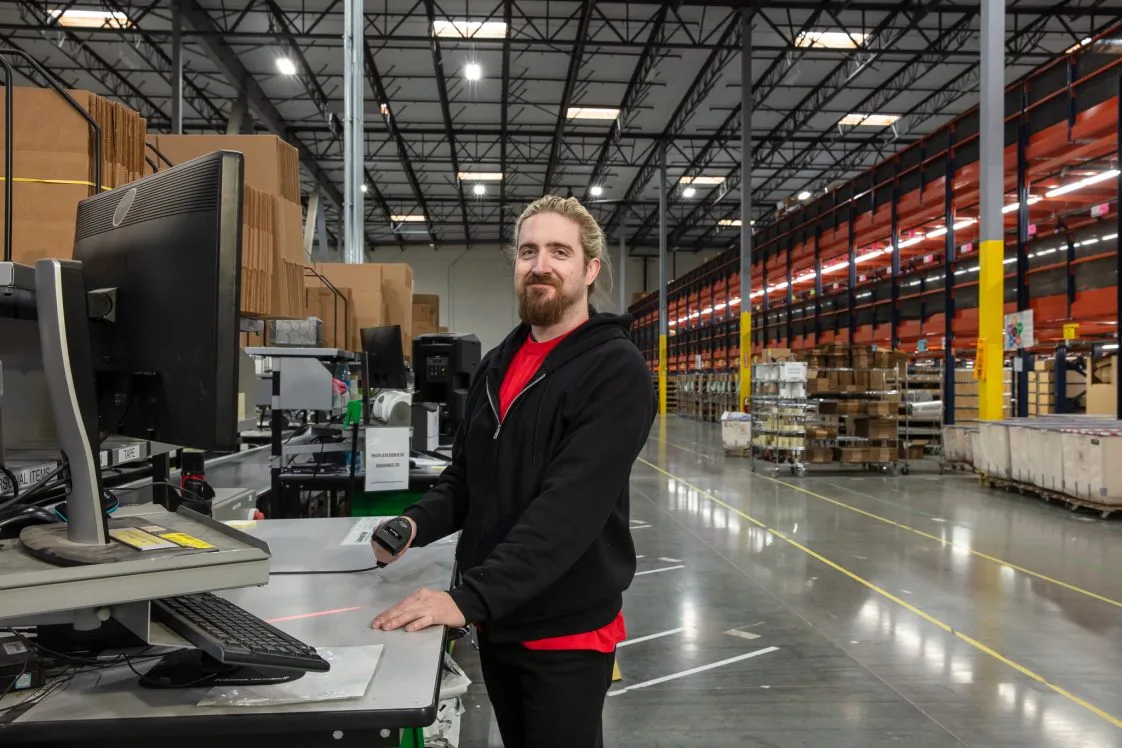In Peak 2023, Inventory Visibility is Key to Customer Satisfaction

This year’s holiday shoppers are choosing eCommerce retailers based on the best discounts and sales, solid brand reputation, and free shipping. They are looking to brands to help them stretch inflation-weary dollars and they expect retailers to slash prices throughout the holiday shopping season.
For eCommerce brands, this shift in consumer values means not only offering great deals and strategic sales events, but having a handle on real-time inventory visibility. When it comes to holiday gift giving, consumers need to know what’s available and what’s not. So does everyone else in the supply chain.
Orchestrating inventory visibility is also essential for supply chain management, safety stock, store fulfillment options, and eCommerce order fulfillment.
Most retailers are wary of re-experiencing the excess inventory that many are still trying to offload. With industry forecasts predicting that consumers will spend less this peak season, many retailers have pared back their holiday shipments and stock levels. Others are taking a wait-and-see approach, intent on keeping an eye on potential “hot” items and then ensuring they can obtain them quickly should order volumes spike.
No matter the strategy, gaining real-time inventory visibility is key to orchestrating orders this holiday season.
So what holds retailers back from gaining that visibility?
Barriers to Real-time Inventory Visibility
These are some of the most common reasons retailers struggle with inventory visibility:
Disconnected data. While many systems and software come with APIs that enable them to integrate to other software, doing so can be slow and tedious for IT. Non-cloud based software can be very limited in how it can connect to cloud software — and it is cloud-based software needed to provide real-time visibility. Data and software has to be integrated so data can be shared across channels and dashboards and keep everyone on the same page.
Siloed channels. Many retailers have created a smooth omnichannel experience on the front end, but back end operations are often far less streamlined. You might need to transfer orders manually from the eCommerce store, social media channels, and brick-and-mortar locations to an order management system (OMS). Analytics are commonly siloed by channel, which makes it challenging to compare sales and demand. Channels that are siloed often have valuable data within them, but they need to be integrated to make this data available to decision makers and useful.
Outdated order management system. A modern omnichannel OMS is integrated with other solutions and provides reliable data you can trust. Outdated OMS solutions may not have modern cloud versioning, security patches, automation, and AI-enhanced features that contribute to real-time visibility. For example, a modern OMS like Radial’s automatically logs all orders in a single dashboard in real time. Here, data can be segmented by channel to display where products are popular and how much is required to keep pace with peak season customer demand. A modern OMS will also scale to handle massive order volumes, and you will be able to see inventory levels at any given moment and location. Predictive inventory management can look out into the months ahead and plan accurate inventory shipments.
Partner with a Fulfillment Provider to Gain Inventory Visibility
Real-time inventory visibility is typically a feature of a modern OMS, but that’s just one part of the equation. Orchestrating the insights and multiple decisions that come from having that visibility requires a streamlined order fulfillment process. During the business of peak (and throughout all the unexpected spikes during the year), one of the best ways to gain this is by partnering with an order fulfillment partner, like Radial, that utilizes advanced technology.
An eCommerce order fulfillment partner will be able to provide:
- Real-time inventory control. To manage available-to-promise inventory by channel, minimize stockouts, and realize complete supply chain visibility for tracking and allocation of in-transit inventory.
- One unified dashboard. To easily see all inventory data from every fulfillment channel in one place, including in-demand inventory, excess inventory, and safety stock to make more informed decisions, improve first time fill rates, minimize split shipments, reduce transit time, and lower transportation costs.
- Avoid ordering too much or the wrong items. Real-time inventory visibility reveals see what customers actually want to order the right products in the right quantities.
Being able to see inventory wherever it is in the supply chain will help peak season order fulfillment run smoother and will ensure that customers can rely on the availability of products when they make purchase decisions. Managing inventory becomes less stressful and far less dependent on “guesswork” or spreadsheet data.
Radial manages every order as it’s placed and adjusts inventory levels accordingly. This to-the-minute visibility lets us keep up with peak season demands without burdening fulfillment centers, distribution centers and warehouses with overstock. We find the optimal inventory location based on proximity to your customer and last mile delivery efficiency.
With Radial as a partner, eCommerce retailers can successfully navigate the challenges of inventory management before and during the peak season rush — and the reverse logistics that follows. Better inventory accuracy leads to increased profitability, smoother workflows, better warehouse management, more positive in-store and online shopping experiences, and improves operational efficiencies. Streamline your inventory management with a eCommerce fulfillment partner that utilizes real-time inventory visibility and be the retailer customers choose first this holiday season.
Radial can help with inventory visibility.
